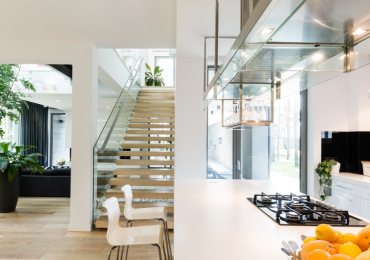Let’s talk about digitization
About 35 years ago, with the emerging generation of home computers, the starting signal for digitization was given. At the same time, the term BIM also entered the stage of the building industry for the first time. Since then, virtually every industry has been digitally brought up to date. The construction industry, on the other hand, is trailing behind. But the good news is that the digitization of the construction industry is in full swing – and with it, architecture and civil engineering are changing. Computer-based planning and production processes are increasingly determining the work in planning offices.
Industry 4.0 is opening up new potential: houses from the 3D printer, building scanning by drone, and Internet-of-Things solutions for construction – exciting perspectives that present new challenges for all those involved in construction. The viral disease Sars-CoV2 is generating a rather unexpected drive for digitization. However, we would like to point out that the past has shown us that crises always have an accelerating effect on trends, and this is also the case today.
Archbrix, think global act local
Digital technologies enable better collaboration and control of the value chain and data-based decision-making. Admittedly, archibrix does not digitize the way of building in the conventional sense, but we do bring together all project participants from all over the world on an online platform. The process of marketing and communication takes place globally, while the process of building remains local. In doing so, we rely on efficient processes and offer enormous advantages for all parties involved. With very little effort, architects can present their designs to an almost infinite number of clients, developers, and real estate project developers. Furthermore, they can also monetize their designs and, subsequently, obtain commissioned work. All this without leaving your own 4 walls.
There is no way around BIM?
That is not true. Unlike fashions that usually give new trends in the spring and autumn/winter of each year, BIM is a constant part of the digitization megatrend. And in principle, BIM has accompanied us since the 1980s, when the first 3D-oriented concepts were created. Even if nobody spoke of BIM in the 1980s, but of model-oriented concepts and systems, BIM is older than many people think. Archibrix relies on the so-called BIM method (Building Information Modelling): In this method, all project participants access the same data pool, which they continually update themselves.
However, BIM is more than just a 3D model to which everyone has simultaneous access. In addition to building data, a project’s database also contains – depending on the planning dimension – information about the materials and components used, their service life or regulatory requirements for fire protection – as well as a list of the costs incurred, which can be checked in detail during each construction phase.
The future lies in digitization
Ducking away does not help, it requires active acceptance of the challenge.We pursue efficient working and saving time with our quality control on our online platform using the BIM method. In doing so, we set a certain standard and together we set off into a digital future that cannot be stopped anyway. It is not about reacting to the market, but about influencing it and helping to shape it.


